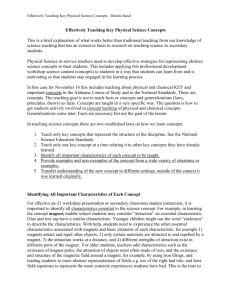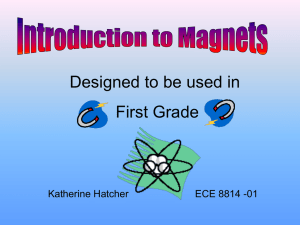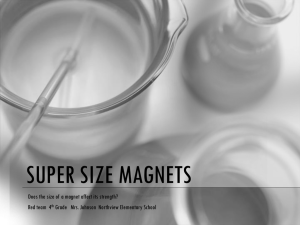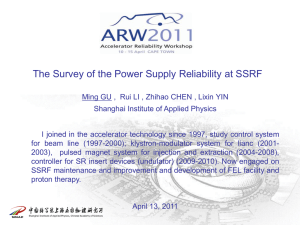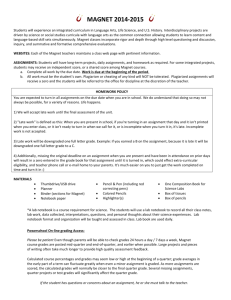Accelerator_Engineering
advertisement
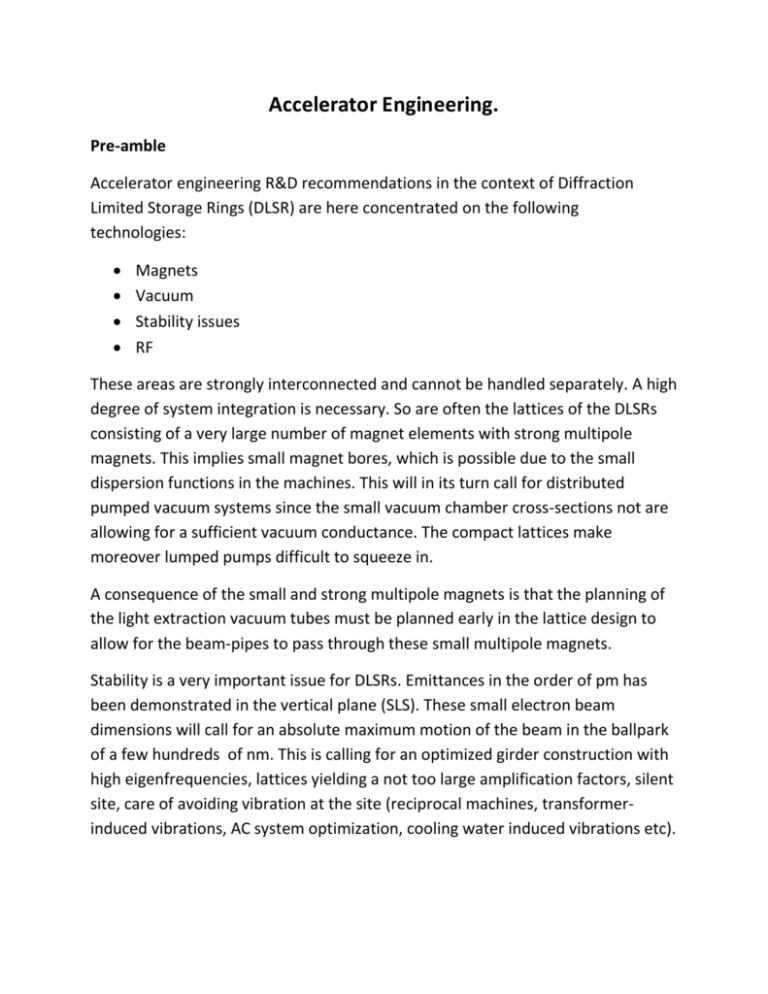
Accelerator Engineering. Pre-amble Accelerator engineering R&D recommendations in the context of Diffraction Limited Storage Rings (DLSR) are here concentrated on the following technologies: Magnets Vacuum Stability issues RF These areas are strongly interconnected and cannot be handled separately. A high degree of system integration is necessary. So are often the lattices of the DLSRs consisting of a very large number of magnet elements with strong multipole magnets. This implies small magnet bores, which is possible due to the small dispersion functions in the machines. This will in its turn call for distributed pumped vacuum systems since the small vacuum chamber cross-sections not are allowing for a sufficient vacuum conductance. The compact lattices make moreover lumped pumps difficult to squeeze in. A consequence of the small and strong multipole magnets is that the planning of the light extraction vacuum tubes must be planned early in the lattice design to allow for the beam-pipes to pass through these small multipole magnets. Stability is a very important issue for DLSRs. Emittances in the order of pm has been demonstrated in the vertical plane (SLS). These small electron beam dimensions will call for an absolute maximum motion of the beam in the ballpark of a few hundreds of nm. This is calling for an optimized girder construction with high eigenfrequencies, lattices yielding a not too large amplification factors, silent site, care of avoiding vibration at the site (reciprocal machines, transformerinduced vibrations, AC system optimization, cooling water induced vibrations etc). Magnets. As mentioned above, very strong multipole magnets are often needed in the DLSRs. This is in principle not a big problem, provided that the magnet bores can be small enough, which not always is the case. Emphasis should be paid on this optimization process. A consequence of the small magnet bores needed is that the mechanical tolerances of the magnet poles might become extremely small. These tolerances should preferably not be over-specified to avoid prohibitively high production costs. The tolerance demands might prevent us from going to extremely small magnet bores. We thus recommend that some additional R&D is paid on this optimization process, ensuring that proper interaction with the accelerator physics is in place. The stability and alignment issues should be addressed in the magnet design. Machining several magnets in the same iron block or careful alignments on a common girder? So is for instance an integrated magnet-girder design used at MAX IV where many magnets and other functions are machined in the same solid iron block and the eigenfrequencies are pushed up to the 100 Hz region and internal alignment is achieved by machining. Laminated as well as solid steel magnet designs can be used. We recommend that R&D work is spent on these alternatives. The maximum pole tip magnet field is an important issue. Going up to the nonlinear part of the magnet excitation curve is sometimes necessary. We recommend that some R&D work is also spent on this problem and the material choice. In this context, also the permanent magnet solution should be investigated. Vacuum As said above, the vacuum pipe bore is defined by the magnet dimensions. The minimum vac chamber diameter is most probably in the 8 mm ball-park. It is not obvious if so small bores can be used since the tolerances of the multipole magnets might prevent us to go to such small vacuum pipe dimensions. Possible constraints are injection needs, NEG-coating and tolerances. R&D to perform NEG-coating tests on small bent tubes should be done. For pumping down the chambers, NEG-coating seems to be the technology chosen in many, if not most of the cases. This will in its turn call for a complex and delicate process involving etching, cleaning and coating. The quality control is an important issue. Concerning NEG-coating R&D is needed to investigate procedures to minimize NEG-coating time, activation time and time needed for interventions procedures. At the moment, the industrial production capacity seems to be a bottle-neck in this context, especially if earlier experience is demanded. An alternative is of course to set up an in-house NEG-coating facility if it doesn’t already exist. The impedance of the vacuum system, especially when short bunches are required, is naturally also an important issue. Distributed heat absorbing, constituted by the copper vac chamber itself could be contemplated. R&D is needed to investigate the material choice of the vac chambers. FEA studies of mechanical and heat absorption properties are necessary. Stability As mentioned above, a DLSR calls for very small electron beam displacements. Girder eigenfrequencies and lattice amplifications will decrease the vibration displacement tolerances. FOFB will naturally ease the situation for the electron beam motion. The site of a DLSR could be chosen to a silent region not to risk the successful operation of a DLSR. When choosing site, a careful study of the ground geological composition and its properties should be carried out. Model FEA calculations including the building should also be carried out and strict rules for the machinery choice at the site should be established. The building itself should be optimized not to amplify the vibrations. Actions to damp the vibrations coming from outside should also be considered. Culture noise induced by the activity at the site is an issue and this noise source can easily be the dominant contribution to the vibrations. As mentioned above, reciprocal machines, noisy air-handling systems, cooling water turbulent noise and pressure variations due to pumps etc should be avoided or minimized. The building itself should be designed with an eye on the vibrational issues. RF The RF frequency choice is an important parameter for the successful operation of the DLSR facility. Even if this is obvious, most laboratories stay at their traditional RF frequency choice. Low frequency systems giving longer bunches offer some advantages at medium electron energy DLSRs. The longer bunches, even prolonged with Harmonic Cavities, offer passive stability for many collective instabilities, low electric consumption and low investment costs. For short bunches, or if the energy losses/turn exceeds a critical value, the high shunt impedance of systems using higher frequencies should be considered. As the demand on short bunches and high peak currents are increased, the electron energy will automatically call for higher electron energies and larger rings. An RFsystem in the GHz region, eventually with SC cavities, seems to be the preferred choice. Recommended R&D: Magnets: Optimization of magnet bore dimensions with respect on magnet mechanical tolerances, multipole strengths, yoke saturation and vacuum system design. Magnet material choice and solid magnets versus laminated with respect taken to the stability issues mentioned above. Vacuum: NEG-coating process Heat absorption Synchrotron light extraction BPM head stability NEG activation Vac system installation Vac chamber material Stability: Site vibration specifications Building optimization In-house machinery specifications Cooling water system specifications Air handling system specifications Temperature induced displacements Alignment. Machining or individual alignment? Frequency choice specifications Harmonic Cavity systems Amplifiers Cold/warm cavity choice RF: LLRF Broad-band impedance HOM Crab cavities Conclusion The engineering R&D identified for the construction DLSRs is a challenging task, but we have not identified any show-stoppers.



